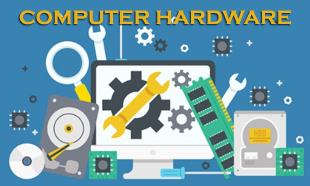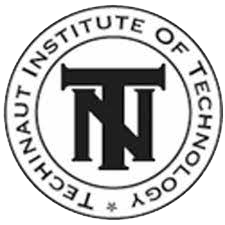0
Computer Hardware" at GD Computer Class, a Techinaut Institute of Technology franchise in Una, Gir Somnath, Gujarat, provides comprehensive training on hardware components, assembly, troubleshooting, and maintenance, equipping students with essential skills for computer hardware management.
COMPUTER HARDWARE
GD Computer Class, located in Una, Gir Somnath, Gujarat, offers a specialized 6-month course in Computer Hardware. This program, run as a franchise of Techinaut Institute of Technology, provides comprehensive training on the various components of computer hardware. From the basics of personal computers to advanced troubleshooting techniques, students undergo a transformative learning experience that not only prepares them for careers in computer hardware maintenance and support but also inspires and motivates them to excel in the field.
COURSE OVERVIEW:
Part I: The Basics
1. The Personal Computer:
Students are introduced to personal computers (PCs) and their role in modern technology. They learn about the evolution of PCs, the types of computers, and their applications in various industries.
2. Basic PC Concepts and Terminology:
This module covers essential PC concepts and terminology, including hardware components, software, peripherals, and networking. Students gain familiarity with standard technical terms used in computer hardware.
Part II: Internal Components
3. Microprocessors:
Students delve into the heart of the computer system: the microprocessor. They learn about different types of microprocessors, their architectures, and their functions. Practical exercises involve identifying and installing microprocessors.
4. Motherboards:
This module focuses on motherboards, the main circuit board in a computer system. Students learn about motherboard components, layouts, and form factors. They explore techniques for troubleshooting motherboard issues.
5. Chipsets and Controllers:
Students gain an understanding of chipsets and controllers, which manage communication between different hardware components. They learn about chipset types, functions, and compatibility considerations.
6. The BIOS and the Boot Process:
Students learn about the Basic Input/Output System (BIOS) and its role in the boot process. They explore BIOS settings, firmware updates, and troubleshooting boot-related issues.
7. Computer Memory:
This module covers computer memory types, including RAM (Random Access Memory) and ROM (Read-Only Memory). Students learn about memory management, upgrading memory modules, and troubleshooting memory-related issues.
8. Cache Memory:
Students explore the cache memory concept and its role in enhancing computer performance. They learn about cache types, levels, and optimization techniques.
9. Hard Disks and Floppy Disks:
Students learn about storage devices, including hard disks and floppy disks. They explore disk types, interfaces, partitioning, formatting, and troubleshooting disk-related issues.
10. CD-ROMs and DVDs:
This module covers optical storage devices, such as CD-ROMs and DVDs. Students learn about optical disk formats, how to burn CDs/DVDs, and how to troubleshoot optical drive issues.
11. Expansion Cards:
Students gain an understanding of expansion cards and their role in expanding a computer system's functionality. They learn about different types of expansion cards, installation procedures, and troubleshooting techniques.
12. Video Cards:
This module focuses on video cards (graphics cards) and their importance in rendering graphics on computer displays. Students learn about video card types, interfaces, drivers, and troubleshooting video-related issues.
13. System Resources:
Students explore system resources, including IRQs (Interrupt Requests), DMA (Direct Memory Access) channels, and I/O (Input/Output) addresses. They learn about resource conflicts and strategies for resolving them.
14. Power Supply and Electrical Issues:
This module covers power supply units (PSUs) and electrical considerations in computer hardware. Students learn about PSU types, voltage regulation, power management, and troubleshooting power-related issues.
Part III: External Components
15. The System Case:
Students learn about computer system cases and their components. They explore case types, sizes, cooling systems, and cable management techniques.
16. Monitors and Displays:
This module covers computer monitors and display technologies. Students learn about monitor types, resolutions, refresh rates, and troubleshooting display-related issues.
17. Printers:
Students gain an understanding of printers and their role in producing hard copies of documents. They learn about printer types, printing technologies, maintenance procedures, and troubleshooting printer issues.
18. Keyboards, Mice, and Pointing Devices:
This module focuses on input devices, including keyboards, mice, and pointing devices. Students learn about device types, connectivity options, and troubleshooting input device issues.
19. Ports and Connectors:
Students explore the various ports and connectors that connect peripheral devices to a computer system. They learn about port types, functions, and troubleshooting connection issues.
20. Networks and Communications:
This module covers networking concepts and communication technologies. Students learn about network types, topologies, protocols, and troubleshooting network connectivity issues.
21. Audio/Visual Devices:
Students gain an understanding of audio and visual devices, such as speakers, microphones, and webcams. They learn about device configurations, drivers, and troubleshooting audio/visual issues.
Part IV: System Care and Troubleshooting
22. PC Care and Maintenance:
Students learn about preventive maintenance techniques to keep computer systems running smoothly. They explore cleaning procedures, software updates, and hardware inspections.
23. Electrical Power Issues:
This module covers electrical power issues and their impact on computer hardware. Students learn about power surges, spikes, blackouts, and strategies for protecting computer systems from electrical damage.
24. Troubleshooting PC Hardware:
Students develop troubleshooting skills to identify and resolve hardware problems in computer systems. They learn about common hardware issues, diagnostic tools, and repair techniques.
CONCLUSION:
The Computer Hardware course at GD Computer Class offers comprehensive training on various computer hardware components, from basic concepts to advanced troubleshooting techniques. This course is about learning and preparing for a successful career. Students gain proficiency in hardware installation, maintenance, and repair through theoretical learning and practical exercises. Graduates of the course are not just well-prepared but also highly sought after in the field of computer hardware maintenance and support. Equipped with the knowledge and skills to excel in the dynamic field of computer technology, our graduates are ready to make a difference. Join us at GD Computer Class and embark on a rewarding journey towards a successful career in computer hardware.


